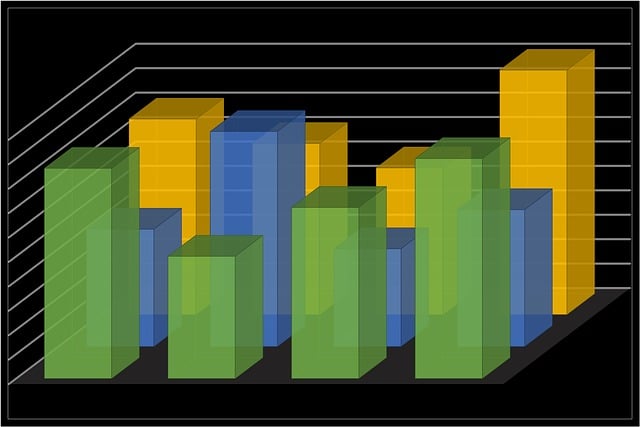Category: Short Term vs Long Term Capital Needs
Short Term vs Long Term Capital Needs: Navigating the Financial Landscape
Introduction
In the complex world of finance, understanding capital needs is pivotal for individuals, businesses, and nations alike. This article delves into the intricate dance between short-term and long-term capital requirements, exploring their nuances, implications, and global impact. By dissecting these concepts, we aim to equip readers with valuable insights, enabling them to make informed decisions in an ever-evolving economic landscape. Get ready to embark on a journey through financial strategies, trends, and the factors shaping our economic future.
Understanding Short Term vs Long Term Capital Needs
Definition and Core Components
Short-term and long-term capital needs refer to the classification of financial resources required for different periods. Short-term capital is typically defined as funds needed for immediate or near-future obligations, generally lasting up to one year. This includes operating expenses, inventory purchases, or short-term debt repayment. On the other hand, long-term capital is intended for longer-duration projects and investments, often extending beyond three years. It covers strategic initiatives, infrastructure development, research, and acquisitions.
Historical Context and Significance
The concept of distinguishing between short-term and long-term capital dates back to classical economic theories. Ancient economists recognized the need to balance immediate requirements with future aspirations. However, its modern application gained prominence in the 20th century as businesses and governments grappled with managing diverse financial demands. This distinction is crucial for several reasons:
- Resource Allocation: It ensures that capital is allocated efficiently, prioritizing immediate needs while also investing in future growth.
- Risk Management: Different time frames carry distinct risk profiles. Short-term needs may involve higher liquidity risks, while long-term investments carry market and project-specific risks.
- Strategic Planning: Understanding these needs guides strategic decision-making, allowing entities to set goals, create budgets, and assess financial health.
Broad Landscape Fit
In the broader economic context, short-term and long-term capital needs are interconnected yet distinct. They form a spectrum that reflects an organization’s or nation’s overall financial strategy:
- Business Perspective: For companies, it involves managing current operations while investing in research and development for future products.
- Governmental Approach: Nations balance short-term budget deficits with long-term infrastructure development and debt management.
- Individual Finance: Personal financial planning includes saving for immediate goals (short term) and investing for retirement (long term).
Global Impact and Trends
The dynamics of short-term and long-term capital needs are shaped by global forces, regional variations, and evolving economic trends. Let’s explore this dynamic landscape:
International Influence
- Global Market Integration: The increasing integration of world markets has led to more cross-border investments, impacting both short-term trade finance and long-term foreign direct investment (FDI).
- International Lending: Cross-border lending practices have evolved, with digital banking platforms facilitating global credit flows for both short-term working capital needs and long-term project financing.
- Trade Agreements: Regional trade blocs often promote economic growth by providing incentives for member states to invest in each other’s short-term and long-term capital needs.
Key Trends Shaping the Trajectory
- Digital Transformation: The digital revolution has accelerated, driving demand for both short-term e-commerce funding and long-term tech startups’ investments.
- Sustainability Focus: A global push towards sustainability has led to increased investment in green technologies, a trend that spans both short-term eco-friendly projects and long-term sustainable development goals.
- Disruptive Innovations: Emerging technologies like blockchain and AI disrupt traditional capital flows, offering new avenues for fundraising and investment, particularly in the long term.
Regional Disparities
- Developed Nations: Countries with robust economies often have more sophisticated financial markets, facilitating easier access to both short-term working capital and long-term funding for startups and established enterprises.
- Developing Economies: These nations may face challenges in attracting long-term foreign investment due to perceived risks but can tap into short-term market financing through bonds and trade finance.
- Emerging Markets: With rapid growth, emerging markets exhibit a mix of both short-term consumer spending booms and long-term infrastructure development drives.
Economic Considerations
The intersection of short-term and long-term capital needs is deeply intertwined with economic dynamics, market behaviors, and investment strategies.
Market Dynamics
- Interest Rates: Central banks’ monetary policies influence interest rates, affecting the cost of borrowing for both short-term and long-term loans.
- Credit Availability: Market conditions can impact lenders’ willingness to extend credit, impacting short-term working capital access and long-term investment opportunities.
- Inflation Expectations: Investors consider future inflation when making long-term commitments, influencing their return expectations.
Investment Strategies
- Diversification: Portfolio investors aim for a balanced mix of short-term and long-term assets to manage risk and optimize returns.
- Risk Tolerance: High-risk investors often target long-term growth opportunities, while conservative investors prefer stable, short-term investments.
- Market Timing: Predicting market trends is crucial for investors; successful timing can enhance both short-term gains and long-term portfolio value.
Government Role
Governments play a pivotal role in managing capital needs:
- Fiscal Policy: Tax policies and government spending influence overall economic activity, affecting both private sector short-term borrowing and long-term investment decisions.
- Infrastructure Development: Public investments in infrastructure often span decades, showcasing the long-term nature of governmental capital needs.
- Stimulus Packages: During economic downturns, governments inject short-term liquidity to support businesses while encouraging long-term investments to drive recovery.
Capital Markets and Financing Options
Understanding how capital is raised and allocated is essential for gauging the effectiveness of short-term and long-term financing options:
Short-Term Financing
- Working Capital Loans: Banks offer short-term loans to businesses for day-to-day operations, inventory, and accounts receivable.
- Commercial Paper: Companies issue short-term debt instruments with maturities up to 270 days, attracting investors seeking liquid, high-credit-quality assets.
- Trade Finance: This involves financing trade-related activities, such as letters of credit, bills of exchange, and factoring, catering to both importers and exporters.
Long-Term Financing
- Debt Securities: Bonds are long-term debt instruments issued by governments, municipalities, and corporations to raise capital for various projects.
- Equity Offerings: Initial Public Offerings (IPOs) and subsequent equity sales allow companies to access public markets for long-term funding.
- Private Equity and Venture Capital: These investment vehicles provide capital for startups and growing businesses, often focusing on high-growth potential sectors.
- International Lending: Multinational banks and financial institutions offer long-term loans for large infrastructure projects or corporate acquisitions.
Risk Management Strategies
Given the distinct risk profiles associated with short-term and long-term investments, effective risk management is crucial:
Short-Term Risks
- Liquidity Risks: Ensuring sufficient cash reserves to meet immediate obligations is vital.
- Market Volatility: Short-term market fluctuations can impact working capital, requiring robust hedging strategies.
- Credit Risk: In short-term loans, creditworthiness assessment is critical, as borrowers may have limited repayment history.
Long-Term Risks
- Project Delays: Infrastructure or research projects face risks of cost overruns and timeline delays, impacting long-term financial plans.
- Market Shifts: Technological obsolescence or changing consumer preferences can affect the viability of long-term investments.
- Regulatory Changes: New laws or policy shifts can impact the profitability and legality of long-term ventures.
Risk Mitigation Techniques
- Diversification: Spreading investments across various sectors, maturities, and regions reduces risk concentration.
- Hedging: Using derivatives to offset potential losses from interest rate or currency fluctuations.
- Insurance: Protecting against specific risks, such as property damage or liability claims.
- Regular Monitoring: Active portfolio management ensures that long-term investments remain aligned with strategic goals and market conditions.
Digital Revolution’s Impact
The digital age has brought transformative changes to the way capital is managed, both short term and long term:
Digital Banking and Fintech
- Real-Time Transactions: Digital banking platforms enable instant money transfers, facilitating efficient short-term trade finance and peer-to-peer lending.
- Online Lending Marketplaces: Fintech companies connect borrowers with lenders, providing access to both short-term business loans and long-term debt financing.
- Blockchain Technology: Decentralized ledgers enhance transparency and security in cross-border transactions, streamlining international trade finance.
Digital Payment Systems
- Mobile Wallets: The rise of mobile payments has accelerated during the pandemic, catering to both short-term consumer spending and digital B2B transactions.
- Contactless Payments: Reducing transaction times and enhancing customer experience, these systems are widely adopted for day-to-day purchases.
- Digital Marketplaces: E-commerce platforms facilitate global trade, supporting short-term export sales and long-term international business expansion.
Sustainability and Green Financing
A growing global emphasis on sustainability has led to innovative financing approaches for both short-term and long-term environmental initiatives:
Short-Term Eco-Friendly Projects
- Green Loans: Banks offer specialized loans for energy-efficient equipment upgrades, green building renovations, or sustainable agricultural practices.
- Renewable Energy Certificates: Market-based mechanisms that incentivize renewable energy production, providing short-term financial benefits to developers.
- Community Solar Programs: Individuals invest in local solar projects, fostering community engagement and supporting sustainable energy initiatives.
Long-Term Green Investments
- Sustainable Bonds: Issued by corporations or governments to fund green projects, these bonds offer long-term financing for renewable energy infrastructure.
- Impact Investing: Investors allocate capital to companies and funds with strong environmental, social, and governance (ESG) practices, seeking both financial returns and positive impact.
- Green Venture Capital: Specializing in clean tech startups, this funding source supports innovative long-term solutions to climate challenges.
Future Trends and Considerations
As we peer into the future, several trends and factors will shape the landscape of short-term and long-term capital management:
Technological Advancements
- Artificial Intelligence (AI): AI algorithms enhance risk assessment, portfolio optimization, and market predictions, improving investment decision-making.
- Robotic Process Automation (RPA): Streamlining back-office functions, RPA reduces operational costs and improves efficiency in financial institutions.
- Quantum Computing: With its immense processing power, quantum computing may revolutionize complex financial modeling and risk analysis.
Global Economic Shifts
- Geopolitical Tensions: Cross-border investments may face challenges due to changing trade policies and sanctions.
- Emerging Markets: As economies develop, they offer both short-term growth opportunities and long-term market potential.
- De-globalization: Some experts predict a shift away from globalized supply chains, impacting international trade finance.
Demographic Changes
- Aging Populations: In many developed countries, aging demographics impact savings rates and investment preferences, influencing both short-term and long-term financial strategies.
- Millennial and Gen Z Consumers: These generations are tech-savvy and socially conscious, driving trends in sustainable investing and digital banking.
Climate Change and ESG Factors
- Regulatory Push: Governments worldwide implement climate-related policies, encouraging long-term investments in low-carbon technologies.
- ESG Integration: Investors increasingly consider ESG factors when evaluating investment opportunities, impacting both short-term trading and long-term portfolio construction.
- Net-Zero Commitments: Many corporations aim for net-zero emissions by 2050, creating a demand for financing to support the transition to sustainable practices.
Conclusion
The intricate relationship between short-term and long-term capital management is crucial for businesses, investors, and governments alike. As the global economy evolves, digital transformation, sustainability, and geopolitical shifts will continue to shape financing options and risk profiles. Understanding these dynamics enables stakeholders to navigate the ever-changing financial landscape effectively, ensuring robust growth and stability.









